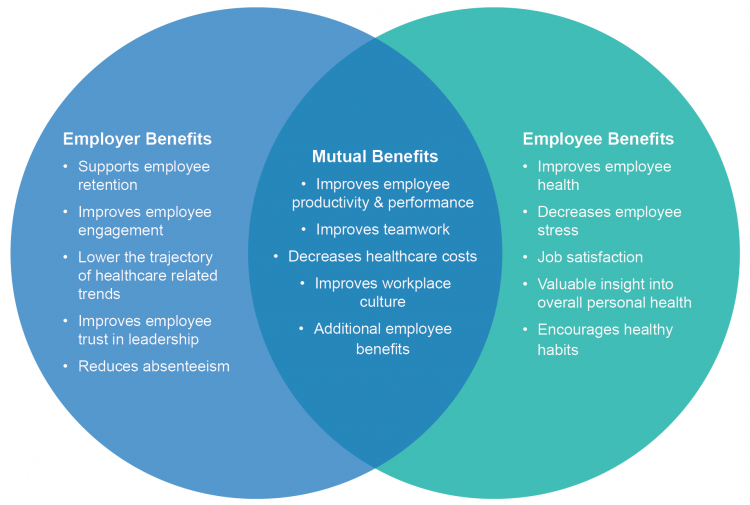
The average person who works a five-day 40-hour week, spends roughly eight hours of their 24-hour day at work. That means that we’re spending about one-third of our day working, one-third of our day sleeping, and the last third of our day on everything else – commuting, eating, preparing meals, performing personal hygiene tasks, and more.
With the time employees spend at work and the little time they have for themselves, it makes sense that employers would want to support their employee’s health. Workplace wellness initiatives are an important tool they can use to do so.
What is workplace wellness?
Workplace wellness is the promotion of healthy activities, initiatives and policies in the workplace that create a culture of wellness and work to improve and support employees’ overall health. These initiatives can include health fairs, biometric health screenings, nutrition coaching, fitness programs, company-wide friendly fitness competitions, and tobacco cessation programs, just to name a few.
Workplace wellness is nothing new – it’s been around for over a century, slowly evolving over the years to meet the needs of new generations of employees. So why are you hearing about it now more than ever? That’s simple – we have the science to back it up! Studies have continuously shown how important these programs are to making a difference in both workplace culture and employee health.
Who benefits from workplace wellness?
An engaging and well-strategized wellness program can create a healthy culture and positive workplace for both the employer and its’ employees. It’s a win-win for everyone.

For employers, workplace wellness programs create and maintain a positive culture of health in the workplace. Positive culture affects employee retentions and is an asset for recruiting new talent. Meanwhile, employees can see boosts to their health and job satisfaction, and get valuable insight into their overall personal health, empowering them to live happier, healthier lives.
How do you implement wellness in the workplace?
It can seem overwhelming to implement wellness in a workplace and build a culture around health, so how do you get started? First thing’s first: You need a designated wellness team or committee to plan and monitor the program. And of course – communication is key. As an employer, it is your responsibility to place an importance on wellness and make sure your employees are aware of new programs that are available to them. Without proper communication, your employees might miss valuable opportunities for improving their health.
The following steps are a great way to design a solution that is right for you and your population:
- Plan
A strategic, effective plan comes from observing your employee population and identifying specific targets, health goals and employee needs. - Implement
Put a wellness plan in place and create opportunities for your employees to learn more about the offering, whether through a town hall, internal newsletter, or other outlet. - Support
Remember that making positive lifestyle changes can be hard and takes time. Support your employees through their journey and demonstrate buy-in as a leader by adopting new programs for yourself. - Evaluate
It is important to evaluate how your program is doing and determining its return on investment (ROI). This is where you determine what is effective and efficient and either make changes to maintain or improve your program.
- Plan
Workplace wellness is essential for a happy and healthy workforce. If you’re looking to start or enhance your workplace wellness initiatives, connect with us. We’ll work with you to figure out how biometric health screenings can fit into your wellness program and improve your employees’ lives.
